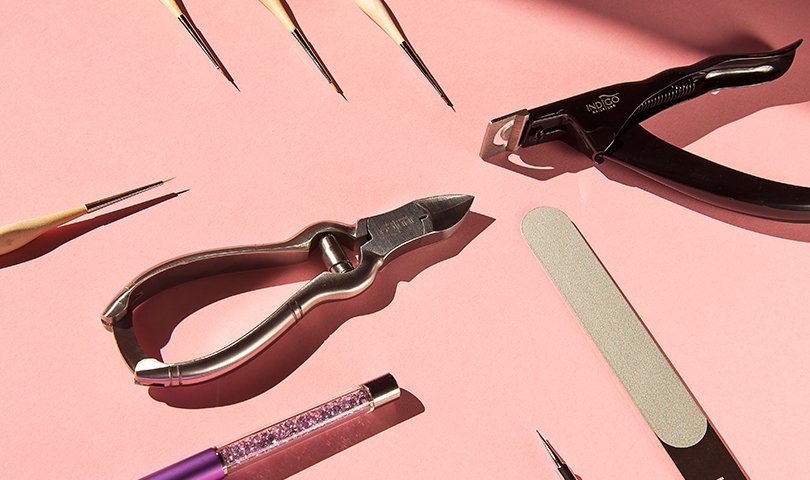
Care for safety in the salon is one of the basic elements for every nail stylist. Why it's so important to comply with the rules of hygiene in the nail salon? How to properly disinfect tools? Get to know the Indigo expert tips and learn how to ensure the safety of your customers.
Manicure tools disinfection - why should you remember?
Although safety awareness of nail stylists work increases significantly, care for hygiene during styling is still underestimated - admits Katarzyna Wojtczak, a longtime Indigo Instructor, listing the risks arising from disregarding standards, such as disinfecting manicure tools. In addition to the risk of infection with fungus or green bacteria, non-compliance with basic hygiene rules also carries the risk of permanent damage to health and even death - the stylist warns. Even the smallest drop of blood with a slight wiping of the epidermis can lead to infection with HIV or hepatitis C. When coming to your salon, the customer may not be aware that she is a carrier of a serious disease that is potentially dangerous to others.
The risk also applies to all types of viruses, including the current coronavirus pandemic, but the spread can be significantly reduced by taking the recommended precautions.
How to take care of safety in a styling salon?
The condition of safety in your salon is the proper disinfection of nail tools and the workplace. Before and after each customer's visit, the entire work station should be disinfected with an appropriate sanitizer. This applies to both the desk and all the equipment around it: a lighting lamp, an additional LED lamp, dust absorbers or palm rests. When disinfecting the e-file, remember to clean the handle and buttons thoroughly.
For hygiene reasons, when arranging a nail salon, it's worth choosing armchairs made of easy-to-clean materials - says Kasia. They should also be disinfected. That is why furniture with a fluffy, velour finish should not be used at manicure stations.
Remember, during your visit, only the products that are essential to perform the treatment should be around.
Disposable nail styling tools
Disposable tools, such as a file or buffer (polisher), are designed to perform a manicure only for one person. After completing the treatment, break them in the presence of the customer and throw them in the bin. If during the visit there was no interruption of tissue continuity and there are no traces of blood on disposable tools; you can also suggest to the Customer that she could take them home, provided that they are for personal use only.
Disinfection and sterilization of manicure tools - metal tools.
Metal tools, such as nippers, scissors, cuticle pushers and bits, are undoubtedly at risk of decontamination, i.e. disinfection and sterilization - explains the Indigo expert. These processes are integral. Both should always be processed with gloves.
Disinfecting cuticle nippers and other metal tools should be performed with an ultrasonic cleaner with a special, prepared in advance liquid. (Remember! Disinfectant products should always be used according to the instructions on the label.) Sterilization is carried out in an autoclave using a high temperature, appropriate pressure and steam. Contrary to popular belief, ball sterilizers or the so-called 'spray' treatments do not meet the sterilizing standards - emphasizes Kasia Wojtczak. This is the usual "hocus pocus" for the well-being of the client.
3 things to remember at the beginning of each visit
To be able to fully ensure the safety of your customer, at the beginning of each visit remember to follow three steps:
- ask the customer to wash their hands
- disinfect her hands with an appropriate product (when choosing a disinfectant, make sure that it complies with the requirements of the sanitary department - there are many products on the market that do not meet the proper standards)
- assess the customer's skin condition to exclude contraindications for the treatment
These three simple and extremely important activities can protect you and your customer from many risks - emphasizes Kasia Wojtczak.
Published:
31.03.2020
Updated:
06.11.2023


